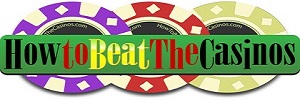The $4 Million Baccarat Hustle
In a story that sounds straight out of a Hollywood heist movie, a recent YouTube documentary reveals how one man pulled off an extraordinary winning streak at the baccarat tables—walking away with a staggering $4 million from some of the most secure casinos in the world.
But how did he do it? And more importantly—was it even legal?
Baccarat is known for being a game of minimal player interaction. There’s no bluffing, no betting against other players, and no reading your opponent’s hand. It’s straightforward: you bet on the player, the banker, or a tie. So how can someone “hustle” at baccarat, where the rules leave such little room for strategy?
The answer lies in a controversial technique known as edge sorting. It’s a method where a player observes subtle inconsistencies in the backs of playing cards—imperfections in the manufacturing or printing process—to gain an advantage. These tiny, almost invisible details can reveal whether a face-down card is likely to be a high or low value. While not strictly illegal, edge sorting exists in a legal grey area—and this baccarat expert knew exactly how to exploit it.
His approach was subtle and surgical. He didn’t tamper with the cards. He didn’t conspire with dealers. Instead, he used keen observation, politely requested certain table conditions (like specific brands of playing cards and the orientation of card placement), and let the casino’s own setup do the work. Over the course of several sessions, his winnings climbed. And the casinos didn’t even realise what was happening—until it was too late.
What followed was a legal battle that challenged the very nature of cheating. The player argued that he used skill and observation—no deceit, no manipulation. The casinos claimed he’d taken unfair advantage of their equipment flaws. Some tried to refuse payment; others paid up under protest. The case sparked a global debate among gambling experts, casino lawyers, and even card manufacturers.
The most fascinating part? This wasn’t a rogue con artist sneaking through back doors. This was a smart, composed individual playing within the system—just more perceptively than anyone else.
For the everyday gambler, there’s a lot to unpack here. First, it highlights how casino games—especially ones like baccarat—can be far less about gut feeling and far more about information, pattern recognition, and exploiting small edges. It’s a reminder that gambling is not always as random as it seems—especially when big money is involved.
Second, it challenges the idea that casinos are always in control. With all their security cameras, dealer training, and carefully structured rules, they still missed something big. And that opens the door to a larger question: if a gambler can beat the house using only observation and memory, should that be considered cheating—or brilliance?
Whether you see the baccarat hustle as unethical or as a David-vs-Goliath victory, there’s no denying its impact. It forced casinos to re-examine their procedures, inspired documentaries and books, and added a new layer to the mythos of elite gambling.
So, what can everyday players learn from it? Probably not to try edge sorting on your local table—you’ll likely get banned, and most modern casinos are wise to it. But the real lesson is in mindset. This gambler approached the game like a puzzle. He didn’t rely on luck. He paid attention, thought critically, and executed a plan. In that sense, he didn’t cheat the game—he mastered it.

